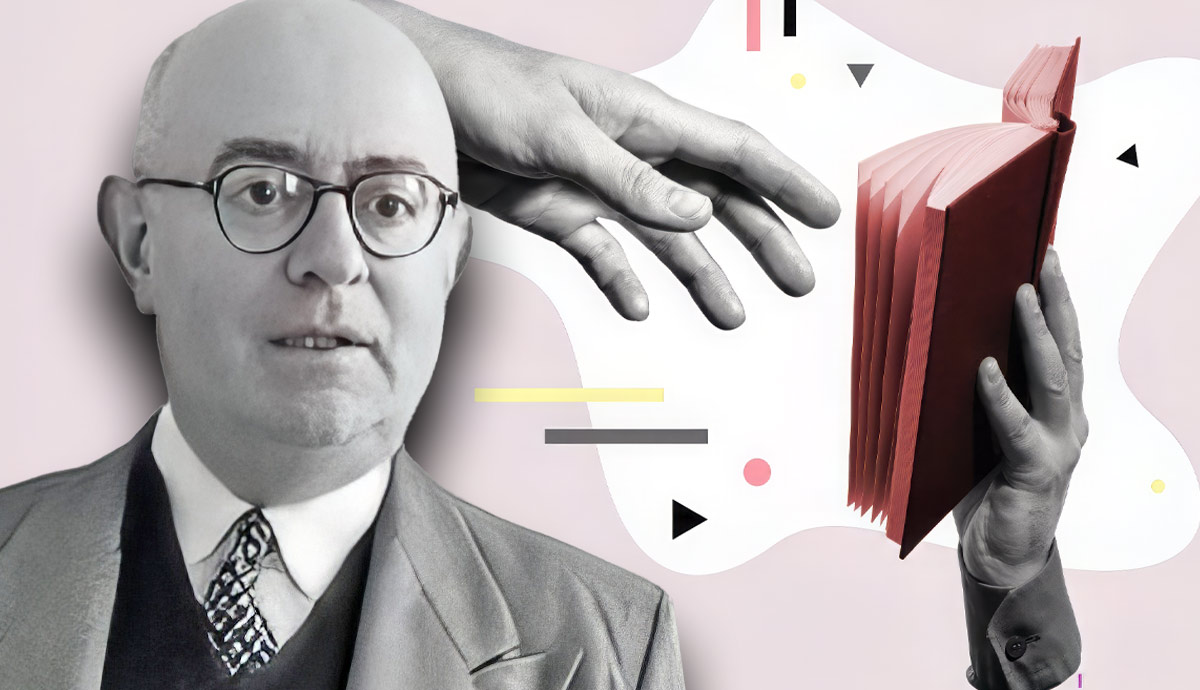
What is Adorno’s philosophy of literature, and how does it relate to his theorization of society as a whole? This article begins with a discussion of Adorno’s Marxism and other influences on his philosophy (particularly his philosophy of art). We develop a sense of Adorno’s conception of literature and its non-sociological theorization of social concerns. This article then concludes with a discussion of Adorno’s evaluative notions about lyric poetry and how they should reflect social concerns in the context of modernity.
Adorno’s Influences

Adorno was a Marxist, but it is a mistake to represent him as a disciple of any one previous philosopher, especially in the context of aesthetics. In fact, Adorno was an inveterate intellectual synthesizer. His aesthetic theory borrows an emphasis on the autonomy of form from Kant, an emphasis on the intellectual content of a work of art from Hegel, and a conception of the artwork as embedded within a social and historical situation as a whole from Marx.
And yet even with respect to his debt to Marx, Adorno’s literary aesthetics (and his aesthetics more broadly) often take insights with some basis in Marx’s work in completely novel directions.
Consider, for instance, his work on tension and contradiction in art. One of the greatest issues for any critic is what to make of contradiction—be it contradictory impulses recognizable in a single work, contradictions in method, style, tone, and practice across an author’s career, or contradictions in the sense of apparent artistic failures. For Adorno, contradictions that exist in any work of art are to be understood as representative of tensions that exist in society as a whole. This is emblematic of the artist’s struggle to create in the midst of a certain sociohistorical context.
Literature and Social Knowledge

Adorno’s conception of literature has been the source of a great deal of critical attention and contestation. It is easily misunderstood. One interpretation of his work has taken him to be largely disinterested in criticism focused on the formal or sheerly aesthetic elements of a particular work of art, and instead interested in interpreting said formal or aesthetic elements in terms of knowledge of a social kind. It is better to spend more of our critical energy on the relationship between a work of art and its social context.
Yet others suggest that this analysis is too quick, focusing—as it does—on stray comments which might equally imply irony and self-awareness as they do a full-throated denial of the relevance of formal analyses. In short, it is possible to read Adorno as primarily concerned with the social conditions which lie behind a certain work of art or as primarily concerned with treating works of art more fully, in terms of their form and aesthetic qualities.
We can follow Robert Kaufman here (as we will elsewhere in this article) in reinserting some context into this debate. In Germany following the Second World War, when many of Adorno’s most influential essays about literature were written, there were two dominant critical trends, both of which Adorno repudiated. On the one hand, there was a kind of reaction to the heavy-handed, ultra-ideological aesthetic tendencies of National Socialism, which in turn held that artworks should be divorced from such concerns. On the other hand, there was a left-wing perspective that saw criticism as the task of “ritual demystifications of artistic illusion, in triumphalist revelations of artworks’ sociohistorical determinations.”
Lyric Poetry and Society

We can follow Kaufman further in recognizing that there it is a mistake to identify Adorno with either approach simply because his engagement with literature repudiates the very idea that what one is after is a sound argument for prioritizing either formal-aesthetic elements or social, historical, political ones.
Rather, Adorno conceives of the relationship between these two critical modes in terms of the so-called “constitutive paradox,” which is as follows:
“The paradox is that if the aesthetic cannot be known without a material-historical sociology, so too a radically intended sociology of art must find its ground extra-empirically, in…the foundationality and indispensability of aesthetic form.”
All of this comes from Adorno’s Lyric Poetry and Society, which begins by acknowledging the sceptical response this subject might reasonably raise. An attempt to understand a work of art socially seems to abnegate or deny the power of the experience of the work of art itself. Lyric poetry is meant to stand apart from socialization, or simply not acknowledge it. The risk is to fall into, for want of a better word, over-intellectualization (which is not a mark of intellectual prowess at all).
“Can anyone, you will ask, who is insensitive to the Muse talk about lyric poetry and society?” Adorno suggests this is possible, because he doesn’t intend to abuse lyric poetry by making it the site where sociological theses can be demonstrated, but rather showing that there is an organic unity between a work of art and its social elements.
Aesthetics and Marxist Thought: Should We Apply Social Concepts to Art?

Adorno notes that the work of art is never an expression of individual intention. It is no coincidence that things only attain the status of art once they begin to speak more universally, and the universality of lyric poetry is social in nature: “only one who hears the voice of humankind in the poem’s solitude can understand what the poem is saying.”
This emphasis on solitude reflects a society that Adorno labels individualistic and atomistic. Aesthetic contemplation is not opposed to thought but rather predicated on thinking a work of art through. We should not content ourselves with a sense of the social or universal concerns of art, but make an attempt to examine them. A social analysis shouldn’t focus on the views their authors have about society or the views about society expressed intentionally within the work, but the ways in which society is as a whole is evident in the work.
This is an exploration both of the way in which “the work of art remains subject to society” and “in what way it transcends it. The application of social concepts is wrong. Whatever social concepts we may wish to apply must be drawn from the work of art itself.
Adorno is therefore advocating an examination of the social elements of literature and lyric poetry without suggesting that we can abandon a close reading practice, because we have these externally validated social concepts which we can apply to a work. In particular, reading and interpretation must remain creative processes because we are attempting to infer social concepts from the texts themselves.
Adorno is especially concerned with the attribution of the label ‘ideology’ to great works of art. Ideology, in Adorno’s view, refers to deception, and it is a feature only of artistic failures, not great successes. Successful works of art will always reveal what ideology is an attempt to hide, however inadvertently.
Adorno’s Answer to the Skeptic

Adorno then returns to those who remain skeptical of introducing social concepts to lyric poetry, observing that the very sense that lyric poetry must remain uncontaminated by social awareness is itself a distinctly social move. In Adorno’s view, this approach implies a “protest against a social situation which every individual experiences as hostile,” a separation from the instrumental logic of utility, ends, self-preservation, and so on.
One might suggest that it is not the social situation but those who invoke social concepts in the interpretation of poetry that one finds hostile. It is the distance between poetry and the world that expresses what is wrong with the world. The separateness of poetry is a relatively modern phenomenon, in the same way that the ‘nature’ which ‘nature paintings’ attempt to capture is also quite a modern development, or at least one which is more recent than we often like to think.

Adorno does admit that there are various counterexamples to this, suggesting that this a kind of general tendency in contemporary responses to poetry rather than an entirely new development. Older lyric poets—citing Pindar as an example—tend to lack the quality of ‘immateriality’ which we associate with lyric poetry. The individuality of lyric poetry, the separateness from social concerns, can be made sense of only in the context of the social world it does not refer to, but which it is a consolation of.
“Even the line from Goethe’s “Wanderers Nachtlied” [Wanderer’s Night Song”], “Warte nur, balde / ruhest du auch” [Only wait, soon I you too shall rest”] has an air of consolation: its unfathomable beauty cannot be separated from something it makes no reference to, the notion of a world that withholds peace.”
If the ideal lyric poem will capture the universal, if it speaks to it, then the relationships of the subject to the object, of the individual to society, will emerge through the poem as the medium by which the “subjective spirit” is thrown back on itself.










